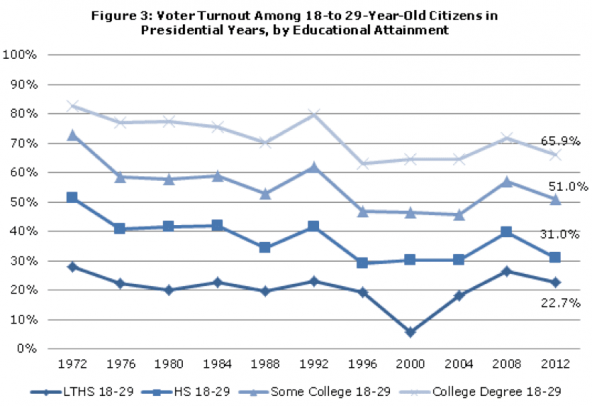- Facebook68
- Total 68
Abby Kiesa and I have a new piece in the Stanford Social Innovation Review (online), entitled “Do We Actually Want Higher Youth Voter Turnout?” We dispute the premise that youth turnout has declined–or risen. Instead, we note the “the relentless replication of political inequality by class,” as illustrated (for instance) by this graph:

We observe that the traditional solution to political inequality has deteriorated. “The civil society built in the 20th century tended to recruit young members for non-political reasons and then make them political. Large institutions—such as unions, churches, Urban League, and Elks—had the means and motivations to recruit widely, and they had incentives to interest at least some of their young members in politics. Belonging to these groups (or subscribing to a newspaper) was correlated with voting. But … all these organizations have lost youth members since the 1970s.”
We argue that no single reform or strategy will work in the 21st century, but that sustained investment by major organizations would pay dividends.
Some Twitter replies to the article have said that we overlook new platforms and modes of engagement that have arisen in this century. This is what we said, though:
To be sure, there are now alternatives to these organizations that serve to empower at least some young people. No one could join a social media campaign in 1974, for example. Still, the new array of civic networks and groups have not yet shown that they are capable of boosting youth voter turnout significantly or reducing gaps by social class.